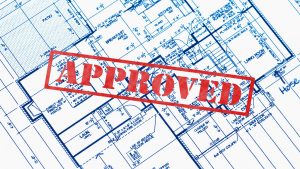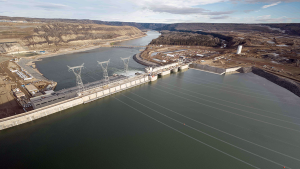British Columbia’s leaky condo crisis has been a windfall for the masonry industry, as more new multi-family, institutional and commercial properties are returning to brick or block envelopes, according to the executive director of the Masonry Institute of B.C.
VANCOUVER
British Columbia’s leaky condo crisis has been a windfall for the masonry industry, as more new multi-family, institutional and commercial properties are returning to brick or block envelopes, said Bill McEwan, executive director of the Masonry Institute of B.C.
“The whole condo crisis has been a boon to the masonry claddings because they have a proven performance,” he said.
Masonry claddings lost popularity to less expensive alternatives, as they demand a rain screen system.
New standards embedded in building codes now make those systems mandatory, making masonry claddings “cost competitive” plus bringing longevity and reliability to the table, said McEwan.
Builders are finding that a brick wall, using a traditional 3.5-inch brick, provides a dense barrier against moisture and has traditionally included a cavity that wicks away moisture before it strikes interior walls.
“What we found when we looked at the buildings that had leaky condo problems, almost none were with masonry claddings,” he said, adding that providing that escape cavity behind the brick wall is something that the masonry industry has done for 70-80 years.
Many masonry tradesmen also recommend a cavity that is larger than set out in building codes.
McEwan said that water essentially has to move past multiple guards to penetrate.
Bricks can be treated with a water repellant, a first line of defense.
The brick and mortar density is also a deterrent to water penetration as well as the cavity that drains water away.
Finally, there is the rain screen. If the rain screen is over concrete, there is a further line of defense.
“California stucco was put onto buildings and it really caused the leaky condos,” said Robert Skujins owner of Dunbar Masonry, which has been in business since l955.
“Stucco was cheaper, but it sprung leaks and then it cost a fortune to rebuild these buildings,” he said.
Many building owners, who are especially interested in quality and durability, are opting for brick facings.
Dunbar today focuses on restoration work with much in Vancouver’s Yaletown and Gastown areas.
“Those buildings — the first in Vancouver — are now l00 and 125 years old,” he said, adding their brick construction is why they have endured, as many masonry structures have in Europe.
“A lot of the brick came over as ballast of ships from Scotland,” he said.
“It’s kind of neat — you pull a building apart and you find old bricks made in Scotland.”
Institutional buildings, concerned with longevity, have traditionally used brick or masonry products, said Eric Sigurdson of Dominion Masonry.
“Nearly every building out there (at UBC) has a major portion of it,” he said, adding that commercial structures are also turning to masonry. “It is also the aesthetic look of masonry,” he said.
Se:math (Sumas) Clay Products, a First Nations venture, has developed a market niche offering specialty items, such as bricks with a native motif or a corporate logo.
Other suppliers like B.C. Brick offer a wider range.
Rick Miller, a B.C. Brick Supplies partner, said there is a tendency today to use different colors of brick in “banding” or mixing up the colors. Today, most brick arrives from Washington, rather than Alberta, which once had a thriving brick industry.










Recent Comments
comments for this post are closed